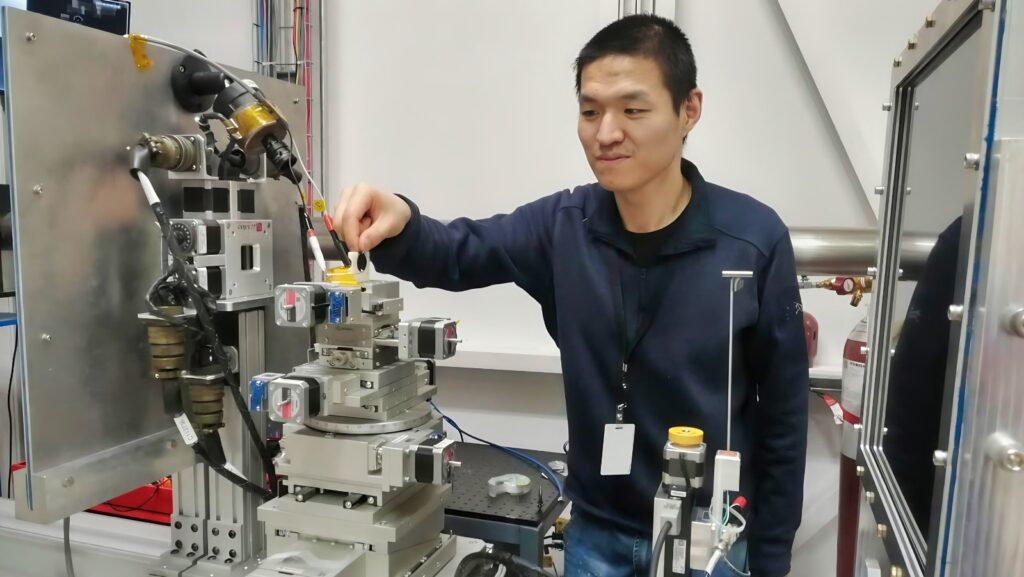
Engineering researchers at the University of Alberta have achieved a significant advancement in the performance of rechargeable, environmentally friendly water-based batteries. This breakthrough could pave the way for more sustainable energy storage solutions, addressing some of the limitations of current battery technologies.
The concept of using batteries with a water-based electrolyte solution, as opposed to the organic solvents in lithium-ion batteries, dates back to the 19th century. The lead-acid “aqueous” battery, invented in 1859 and still used to start most internal combustion vehicles, is a prime example. However, such aqueous batteries have historically lacked the energy density, voltage, and storage capacity required for powering electric vehicles or efficiently storing energy from renewable sources like solar and wind.
Innovative Advances in Battery Technology
While lithium-ion batteries are known for their high energy density, long life, and lightweight construction, they are also expensive and pose risks of fire and explosion. In contrast, aqueous batteries are cheaper, non-toxic, and non-flammable, but have traditionally been less efficient. This is where the work of materials scientists Xiaolei Wang and his student Zhixiao Xu becomes crucial.
Wang and Xu, from the Department of Chemical and Materials Engineering, have developed a method to significantly enhance the performance of aqueous batteries. “Aqueous batteries are cheaper, easily disposed of because we use just water, and aren’t toxic or flammable,” Wang explained. Their findings were recently published in the journal Nature Communications.
Technical Breakthroughs
The primary challenge with organic material-based batteries, including aqueous types, is their poor electrical conductivity, necessitating the addition of extra carbon, which reduces the space available for energy-storing materials. Wang’s team addressed this by innovating the design of electrode materials, where the battery’s energy is stored. In aqueous batteries, the transfer of electrical current between the cathode and anode is facilitated by a water-based electrolyte, unlike the organic solvent used in lithium-ion batteries.
By developing what they term pressurized organic electrodes, Wang’s team achieved improvements in energy density, chemical reactivity, electronic conductivity, thermal stability, mechanical strength, and adhesive properties. “As a result, they charge faster, last longer, and store much more energy, now outperforming almost all other organic batteries,” Wang stated.
“As a result, they charge faster, last longer, and store much more energy, now outperforming almost all other organic batteries,” Wang stated.
Potential for Commercial Application
The results of Wang’s research were based on the lab performance of a coin-sized battery and a larger battery pack about the size of a small sandwich bag. However, Wang acknowledges that further work is needed to make larger batteries viable for commercial use. The next step involves finding an industry partner willing to invest in scaling up this technology.
“We aim to build these batteries for large-scale industrial energy storage. But if we can reach comparable performance for electric vehicles with lower cost and safety concerns, why not?” Wang remarked. This development represents a potential shift in the energy storage landscape, offering a safer and more sustainable alternative to current technologies.
Implications and Future Prospects
The announcement comes at a time when the demand for sustainable energy solutions is at an all-time high. As the world grapples with the challenges of climate change and the transition to renewable energy, innovations like Wang’s could play a crucial role in reducing reliance on fossil fuels and minimizing environmental impact.
According to industry experts, the ability to produce cost-effective, high-performance batteries could revolutionize energy storage, making renewable energy sources more viable and widespread. This could lead to significant advancements in sectors ranging from transportation to grid energy storage.
As Wang’s team continues to refine their technology and seek commercial partnerships, the potential for widespread adoption of enhanced aqueous batteries remains promising. The move represents a step forward in the quest for sustainable energy solutions, with the possibility of reshaping the future of energy storage.





